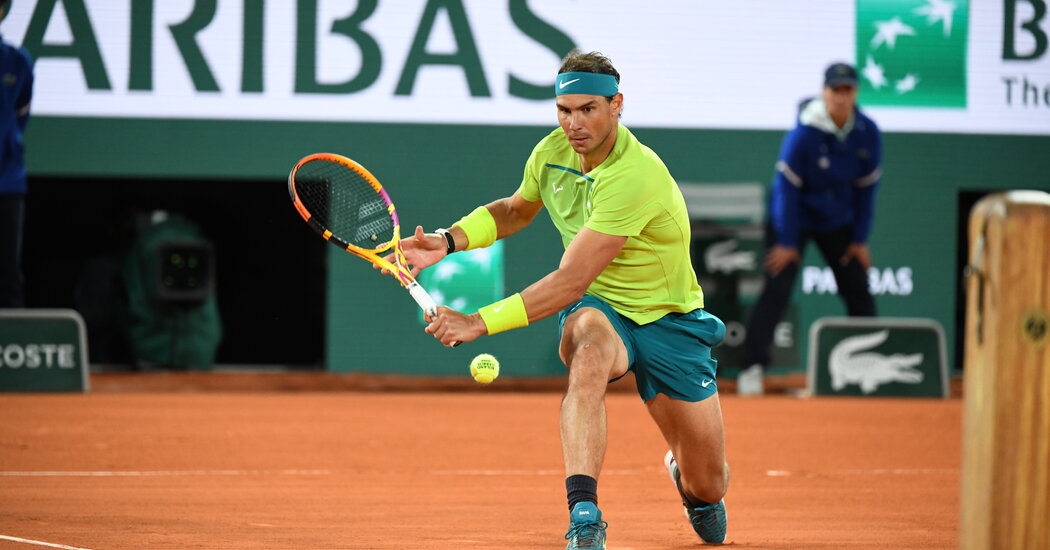
But the mood has shifted in recent seasons. There is now a statue of Nadal near the entrance of the stadium complex, and throughout Tuesday evening there were chants of “Rafa” even as Djokovic prepared to serve at critical phases.
“I think probably they know that I am not going to be here a lot more times,” Nadal said.
It was Djokovic who did not get the chance to play in this year’s Australian Open. He was deported on the eve of the competition after a standoff with the Australian government over his being unvaccinated against Covid-19. But he arrived in Paris and at Tuesday’s match in more convincing form than Nadal, who is without a doubt the greatest men’s clay-court player in history but was very short on matches on the surface this year.
“Yes, I was surprised by my level tonight,” Nadal said. “But in a way it makes it simpler when you know that you either need your A game or you’re going home.”
Nadal injured his ribs at the BNP Paribas Open in Indian Wells, Calif., in March, losing the final to the American Taylor Fritz while playing with a stress fracture. He missed most of the early clay-court season and only returned for the Madrid Open in mid-May, when he was upset by his 19-year-old Spaniard compatriot, Carlos Alcaraz, in the quarterfinals.
Then came the Italian Open, his only other clay-court event before Roland Garros, where Nadal was beaten in three sets by Denis Shapovalov of Canada in a round-of-16 night match in Rome in which he hobbled to the finish, grimacing in pain as his chronic left foot condition resurfaced. He was downbeat after that defeat but did not rule out playing in the French Open and arrived in Paris seeded fifth and, unlike in Rome, with his longtime physician, Angel Ruiz-Cotorro.
“Having the doctor here you can do things that help,” said Nadal, declining to go into detail on his treatment while continuing to suggest that this could be his final appearance at Roland Garros. “I am putting everything that I have to try to play this tournament with the best conditions possible, no? I don’t know what can happen after, honestly, but here I think I am going to be fine.”
As so often, Nadal has proved able to play and prevail through the pain. He fought to a five-set victory in the fourth round over the 21-year-old Canadian Felix Auger-Aliassime, then took on the top-seeded Djokovic for the 59th time on tour and the 10th time at Roland Garros.